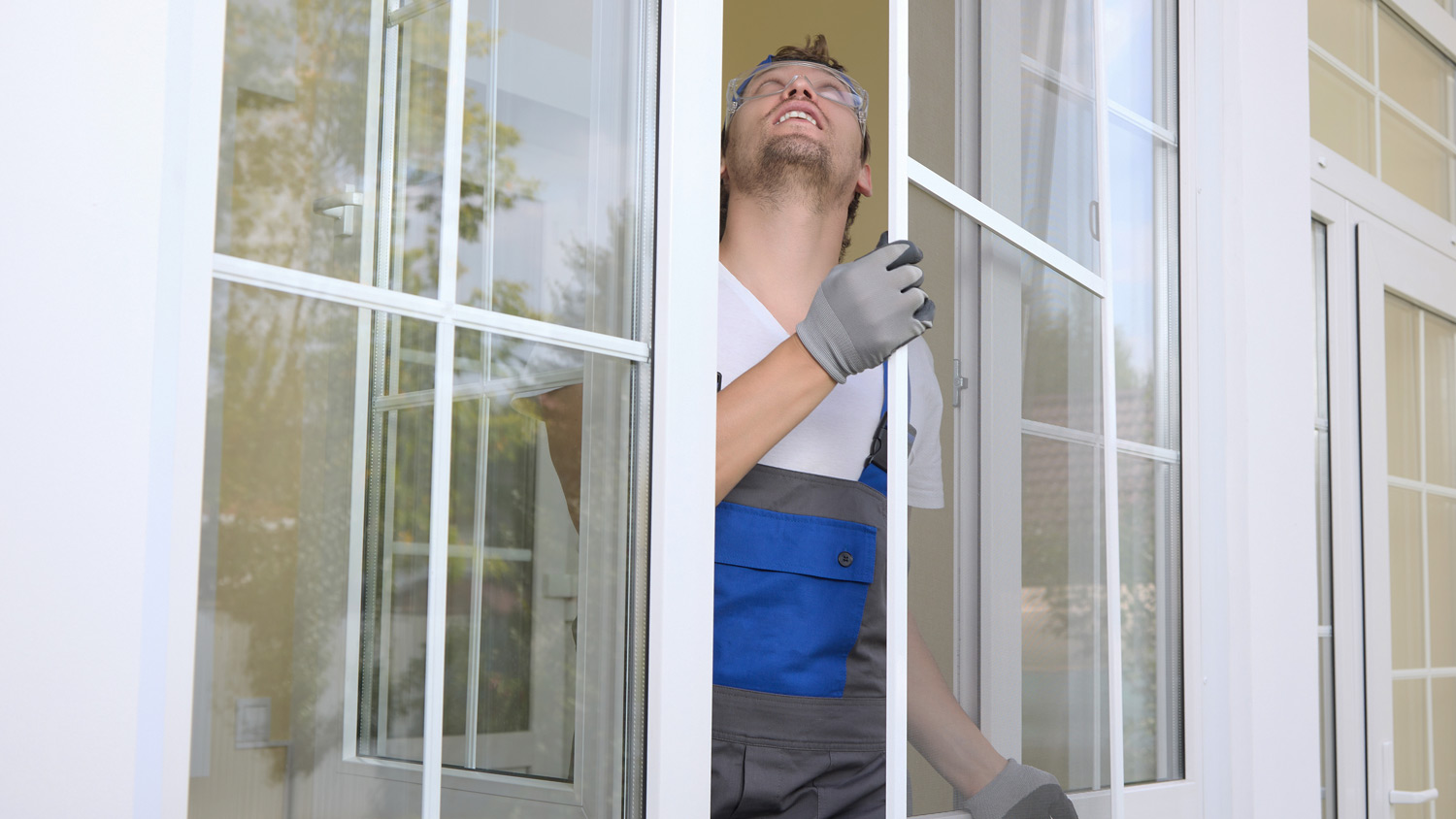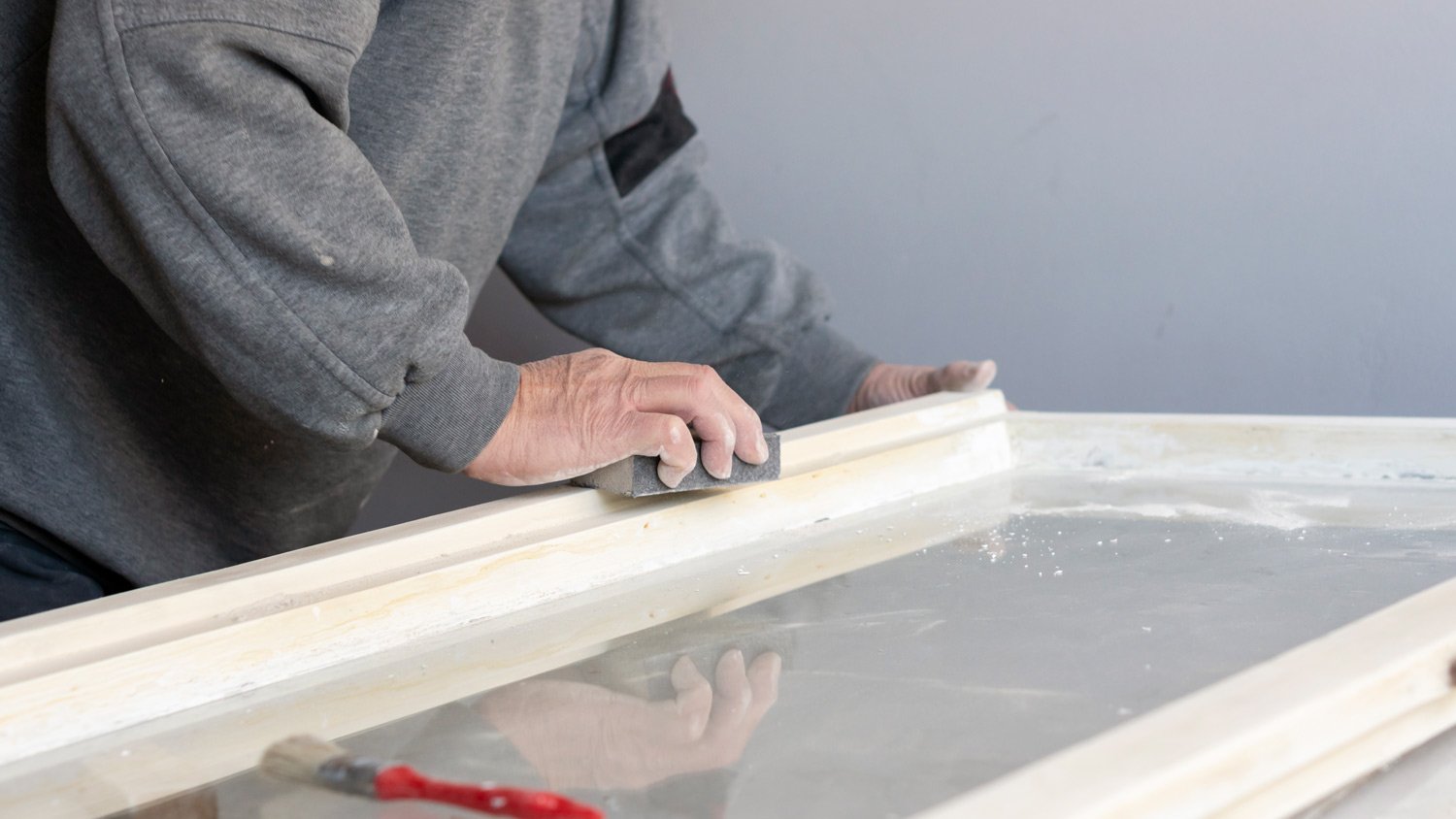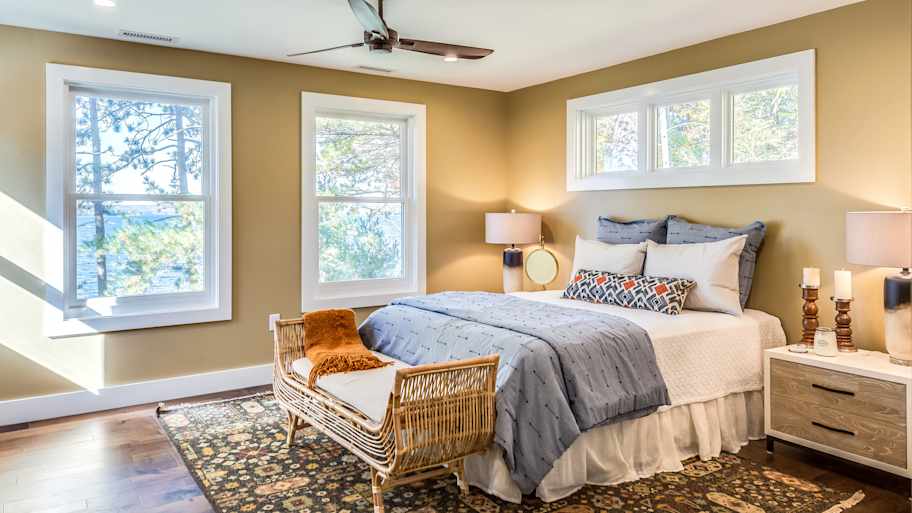
Bigger windows mean more natural light in your space and better views of the outdoors. Learn about the cost to enlarge windows and what affects your total.
Weather-proof your home with easy-to-build storm windows


A window installer costs around $90 to $400 per window, but a pro has the expertise to install faster and ensure the storm windows fit and function correctly.
DIY mistakes like measuring incorrectly and burning shrink film can set you back if you haven’t built or installed storm windows before.
Building storm windows requires tools like a miter saw and materials like shrink film, plexiglass, acrylic, or glass.
Storm windows are great for insulating your home and protecting it against bad weather, but the costs of buying and installing them can quickly add up. Luckily, you have another option: building DIY storm windows. In this guide, we’ll walk you through how to make your own interior storm windows so you can keep your home comfortable while saving some cash.
Storm windows are single window panes that fit into your existing window jamb. You can install them on the inside or outside of your window frame—known as interior and exterior storm windows, respectively.
Interior storm windows—which are sometimes called window inserts—add an extra layer of protection between the inside and outside of your home, regulating the temperature in your home, keeping rain and snow out, and helping with wind mitigation.
Exterior storm windows serve the same purpose, but they can also protect your existing windows against damage from bad weather and hail (much like storm doors).

For this project, we’ll explain how to build interior storm windows. They usually have a wood frame, which surrounds a pane of glass, plexiglass, acrylic, or window insulation film (also known as plastic shrink film). This guide will focus on building a storm window with shrink film, which should be the easiest option for most DIYers.
Before you begin, gather the tools that you’ll need for the project, including:
Measuring tape
Miter saw
Drill and small drill bits
Hair dryer
Measuring for windows is pretty easy, but it requires concentration and precise measurements.
From the inside of your home, measure the height and width of your window opening. Then, subtract 1/2 inch from each measurement to account for the weatherstripping that you’ll be adding later. For example, if your window opening is 24 inches by 30 inches, your measurement would be 23 and 1/2 inches by 29 and 1/2 inches.
With your measurements in hand, head to the hardware store and pick up the following supplies. The quantity you need will depend on the measurements of your window.
Four 1 by 2 wood planks, which are long enough to cut down to the dimensions you measured in the first step
Window insulation kit that includes plastic shrink film and double-sided tape
1/2-inch by 1/2-inch weatherstripping to fit around the perimeter of your window
Clear packing tape
Wood glue
Eight 3-inch screws
Wood stain or paint (optional)
Paintbrush (optional)
If you can’t find a window insulation kit, you can buy the shrink film and double-sided tape separately. You’ll add the film to the front and back of your window frame, so make sure to buy twice as much as the dimensions you measured earlier.
Using your saw, cut the four wood planks—two for the window’s height and two for its length—into the dimensions you need.
You can attach the corners of the planks using miter cuts (where each end of the wood is cut at a 45-degree angle) or butt cuts (where the ends connect at a perpendicular angle). If you opt for a butt joint, you’ll need to trim each horizontal wood plank by twice the width of one plank.

Lay the planks on a flat surface and arrange them so they fit into a frame shape. Then, apply wood glue to each corner and press the joints together. To secure the pieces, drill two pilot holes into the four outside corners of the frame. Insert the screws and use your drill to drive them into the wood to fasten the pieces together.
If possible, let the frame sit for 24 hours before moving to the next step to allow the wood glue to dry.
If you don’t like how the wood looks, this is the time to stain or paint it. Directions and drying times will vary, so it’s best to follow the instructions on whichever stain or paint product you choose.
Set the frame on a clean surface and add double-stick tape to the outer edge of one side of the frame (it doesn’t matter which). Leave the backing on the tape for now. Then, place the shrink film on top of the frame and cut it so it’s slightly larger than the frame itself.
Starting at one side, remove the backing on the tape and attach the film. As you work around the frame, stretch the film so it’s taut, but don’t pull it so hard that it rips.
Use a hair dryer to shrink the film and get rid of any wrinkles. To avoid burning holes in the film, put the dryer on a low setting and keep it at least six inches away from the film. If that’s not powerful enough, slowly increase the heat or get a little bit closer to the film.
When you’re done, repeat the last two steps to attach and shrink the window film on the other side of the frame.
If you need to remove your storm window after it’s installed, pull tabs make it easier to do so. You can make one by sticking a 6-inch piece of packing tape on the outer edge of your window with about 3 or 4 inches of tape hanging off the side. Fold the hanging part back on itself (so there’s no sticky side when you grab it) to create a pull tab.
Not only does weatherstripping help your new storm window fit snugly into the window opening, but it also seals out drafts and insulates your home. To apply it, peel off the backing and press the weatherstripping around the outside perimeter of your storm window frame.
With weatherstripping around the outside of the frame, it should be easy to slide the storm window into your window opening (although it may take some wiggling to pop it into place). Make sure your pull tab faces into your home so you can grab it when you need to take out the window.
Installing DIY interior storm windows can make your home feel more comfortable and protect it from the harsh elements outside. But if this project is too complex or time-consuming for you, there are a few other options to consider, such as:
Installing window film: Instead of building DIY storm windows, you might consider applying window film. It attaches to your existing windows, adding insulation and preventing them from shattering (but not breaking) in high winds. It costs around $350 per 75-square-foot roll.
Weatherstripping your windows: This is another budget-friendly DIY task that will make your windows less leaky and potentially reduce your energy bills. Weatherstripping costs about $10.25 for a 7-foot roll.
Apply new caulk: If the caulk around your windows is damaged or missing, it’s time to replace it. For around $25, you can re-caulk your windows to improve your home’s insulation.
The cost of building storm windows yourself varies depending on the type of wood, the number of windows, and which tools you have at home. Assuming that you have the tools required for the job, you could make and install a storm window for between $55 and $75.
If you buy them from a window company, storm windows cost between $3,300 and $17,250 depending on a few factors, like the size and material of the windows and how many you need. This breaks down to $90 to $400 per window, with an extra $30 to $65 per hour if you hire a local window company to install them. For reference, it usually takes about two hours to install a window.
From average costs to expert advice, get all the answers you need to get your job done.

Bigger windows mean more natural light in your space and better views of the outdoors. Learn about the cost to enlarge windows and what affects your total.

Storm windows keep your more expensive windows protected from impact. Use this storm windows cost guide to get an estimate for protecting your home.

Is it time to upgrade your home’s windows? Learn more about window replacement costs, considering various window sizes, styles, and energy efficiency.

Not sure what window size is right for your space? Learn about standard double-hung windows sizes and what factors affect your sizing.

What is a window sash? Learn why this feature for letting in fresh air can make or break the rest of your window.

Want a quieter home? Learn how to soundproof windows with seven practical methods that block noise and boost comfort—light sleeper and city dweller approved.